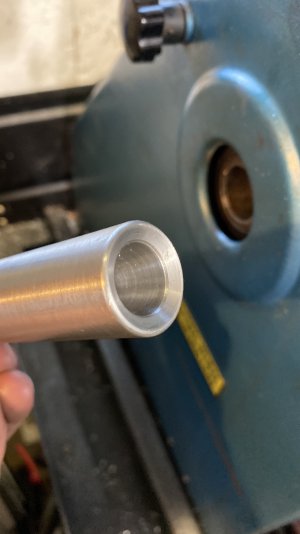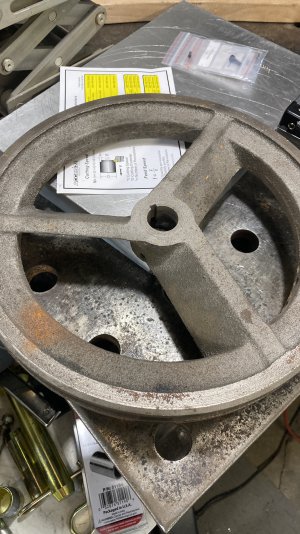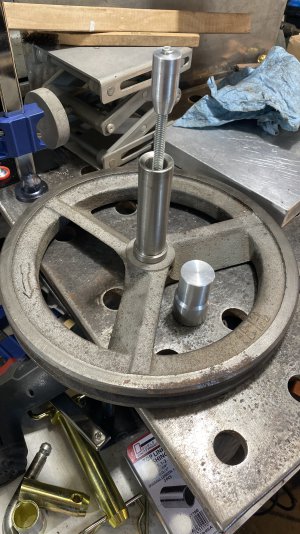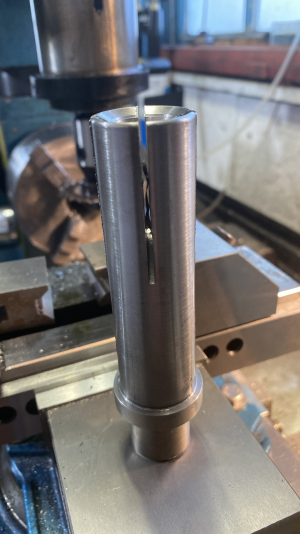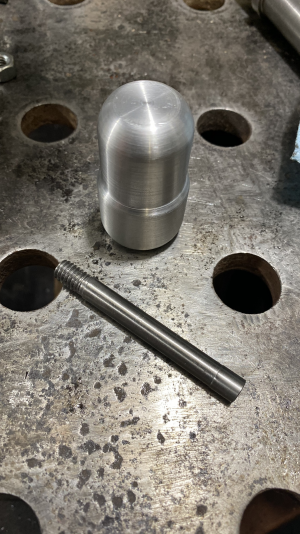- Joined
- May 31, 2020
- Messages
- 5
I am pretty new to machining, although my father was a hobbyist and my stepfather was a machinist, and feel like I am learning quickly. That said, I decided I wanted to really get myself setup for success. I inherited all of my father's tools after he passed away and he had a Smithy CB-300 3-in1 that I have learned to "love". I have cleaned it up, leveled it, made sure the surfaces were burr free and smooth, and that everything runs "true-ish". I have installed a Accusize AXA quick-change toolpost, which makes me love it even more, and am now making a hand crank for the chuck so I can better control it for threading. All in all this has been an easy and fun project. Making accessories for my tools is actually more fun than projects that aren't really useful. For example, candlestick holders, etc.
Since a picture is worth a thousand words I will post photos of what I did and try to keep any words to a minimum. I am new to this so I am trying to use the best terminology to describe what I am doing. Please feel free to correct me.
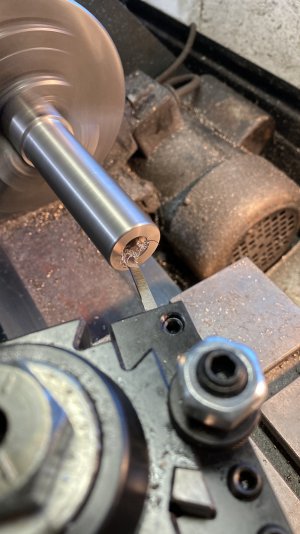
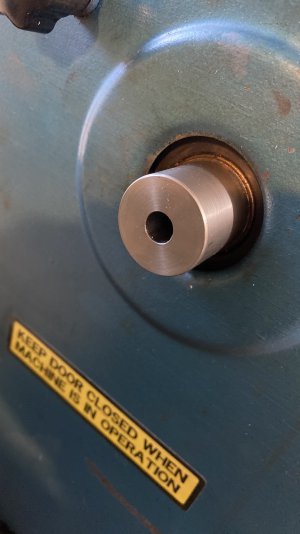
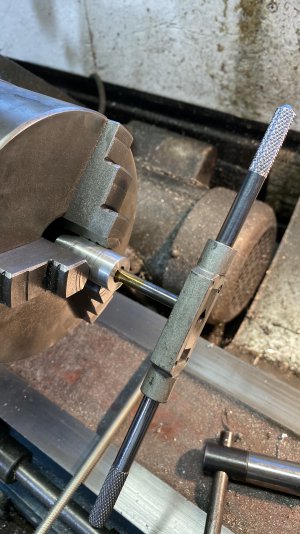
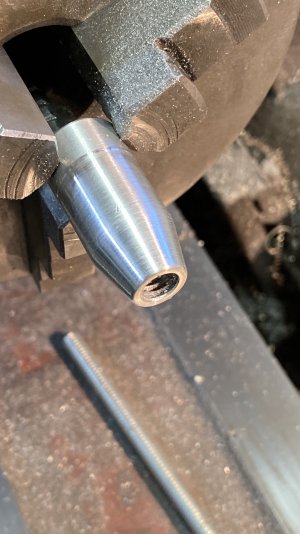
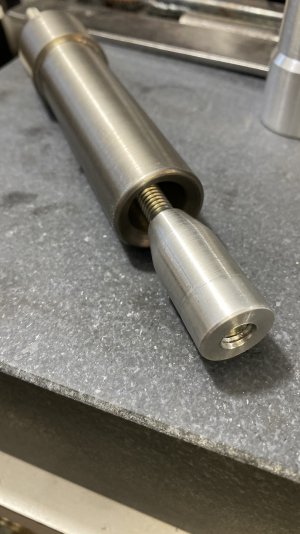
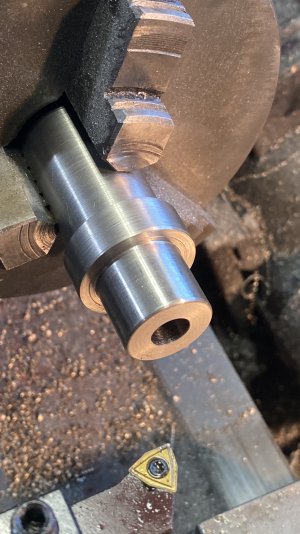
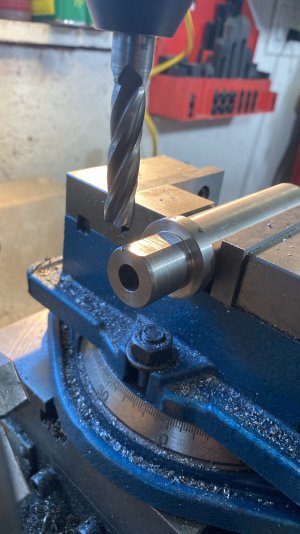
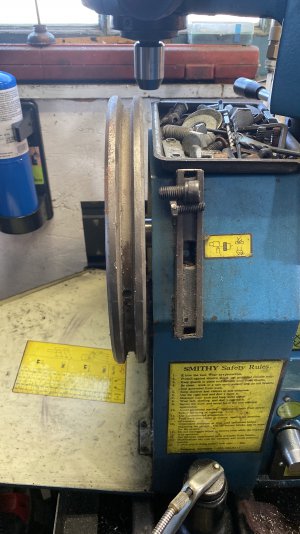
Since a picture is worth a thousand words I will post photos of what I did and try to keep any words to a minimum. I am new to this so I am trying to use the best terminology to describe what I am doing. Please feel free to correct me.
- The crank shaft is turned from stainless steel rod I had laying around.
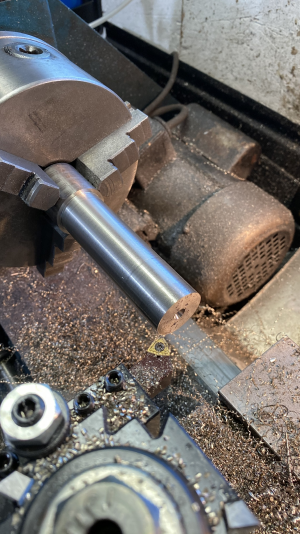
- The collet expander is aluminum and will be tightened with a drawbar. Will likely change this to a harder metal like brass or stainless as suggested by another group member, SLK001, to avoid getting stuck in the grooves. So far during testing it hasn't shown any signs of being soft enough but I would hate for it to fail down the road.
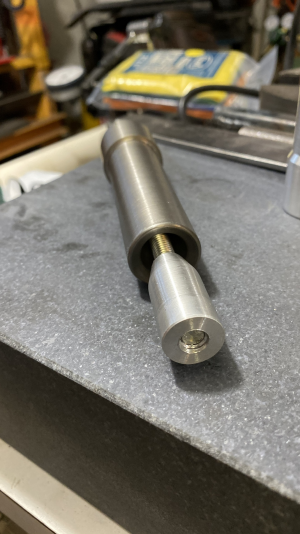
- Shaft slit to allow expansion to lock it in.
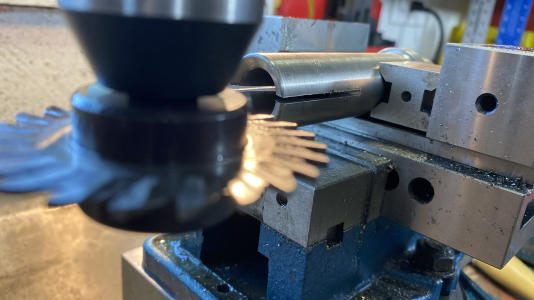
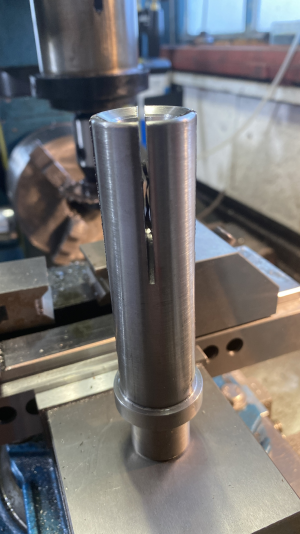
- The flywheel crank is an old cast iron pulley I had from an old air compressor.
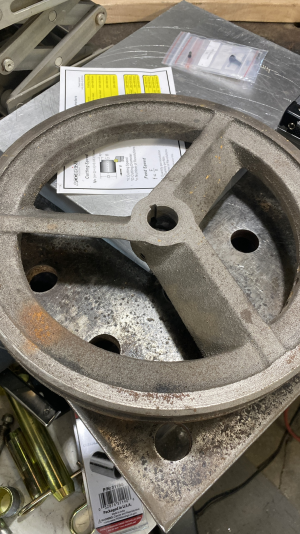
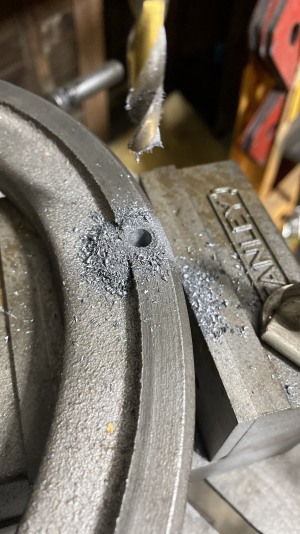
- I milled a flat area on the shaft to allow the flywheel crank to be tightened and not turn on the shaft. Obviously.
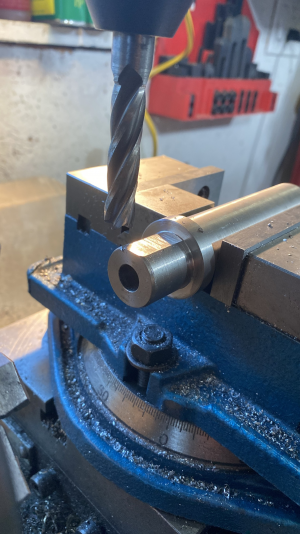
- I made a stubby handle out of aluminum that will just push onto a stainless steel steel shaft. I will add a snap ring to the end of the shaft to hold the handle on.
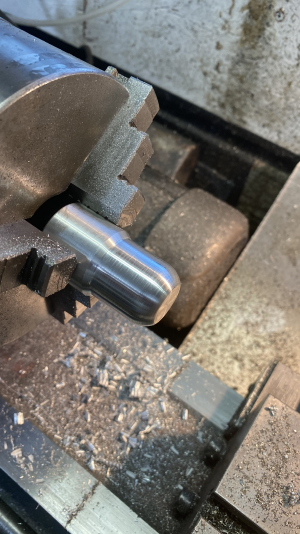
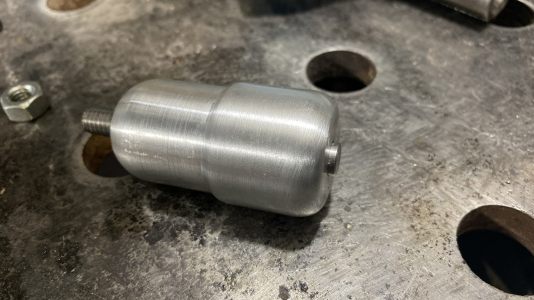
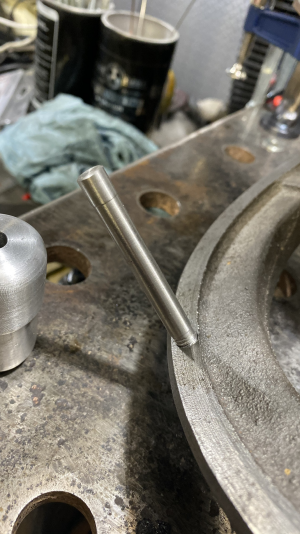
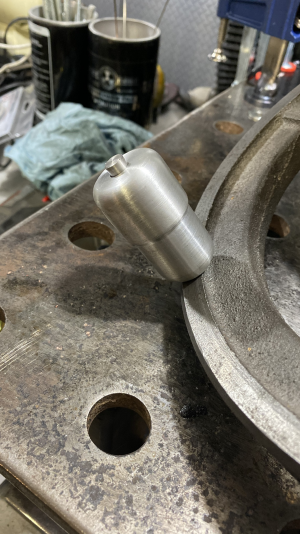
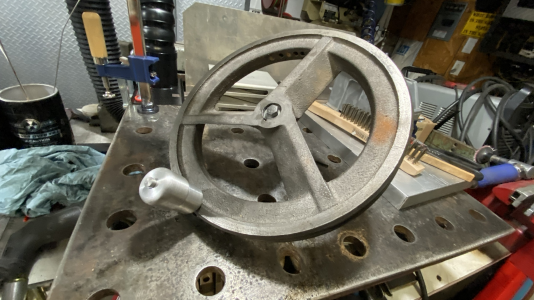
- I did a trial run for crank fit and threading function and so far it performs as expected. I will make a different expander at some point but right now it is working fine.
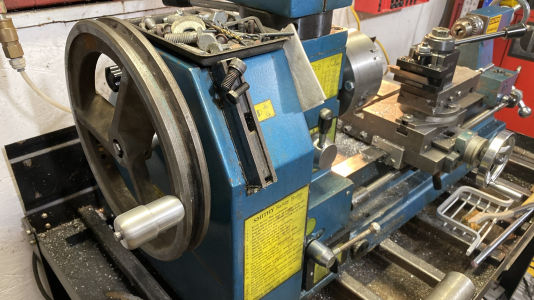
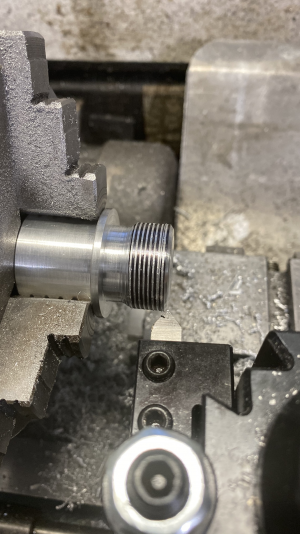
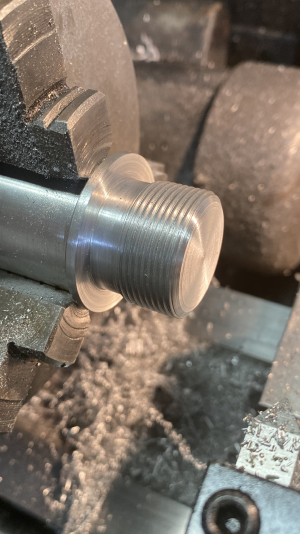








Attachments
Last edited:


